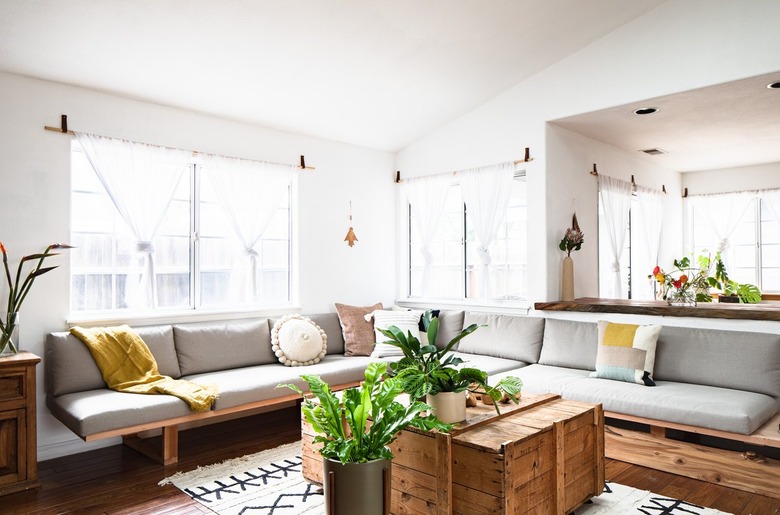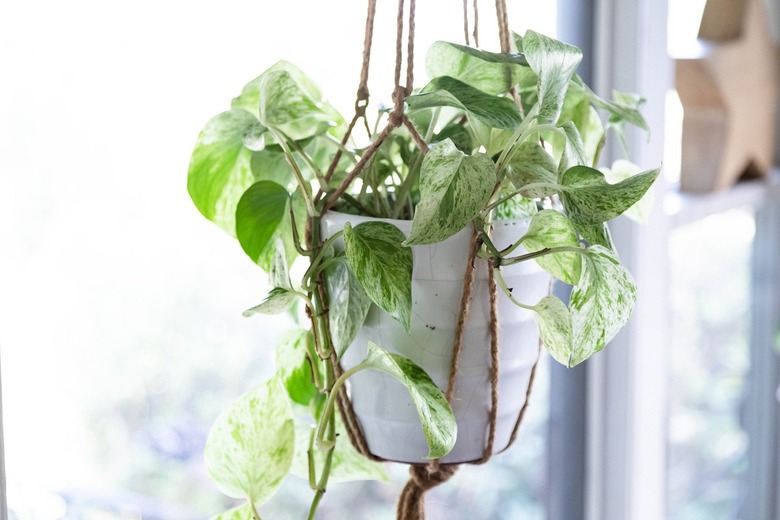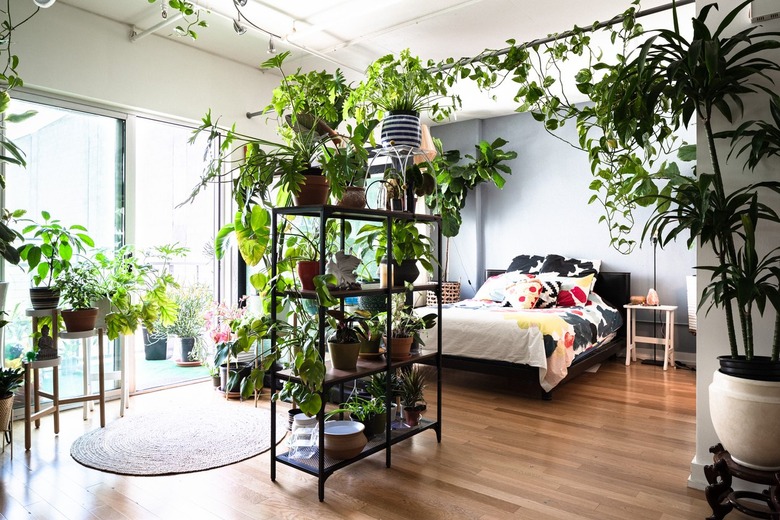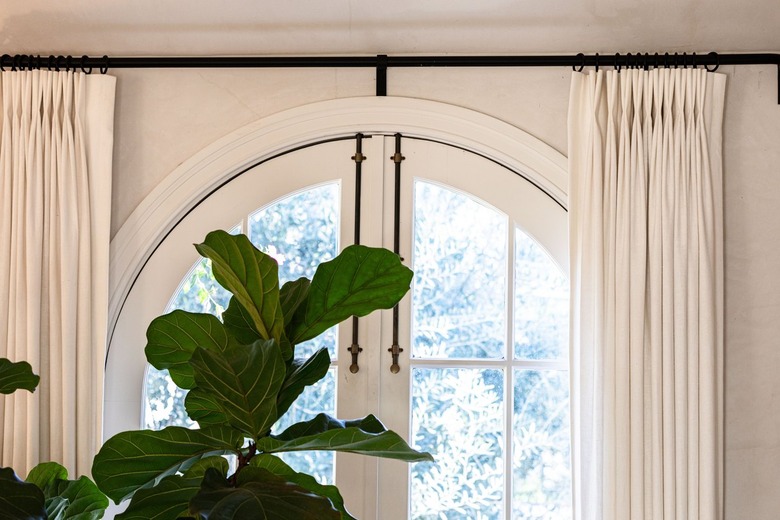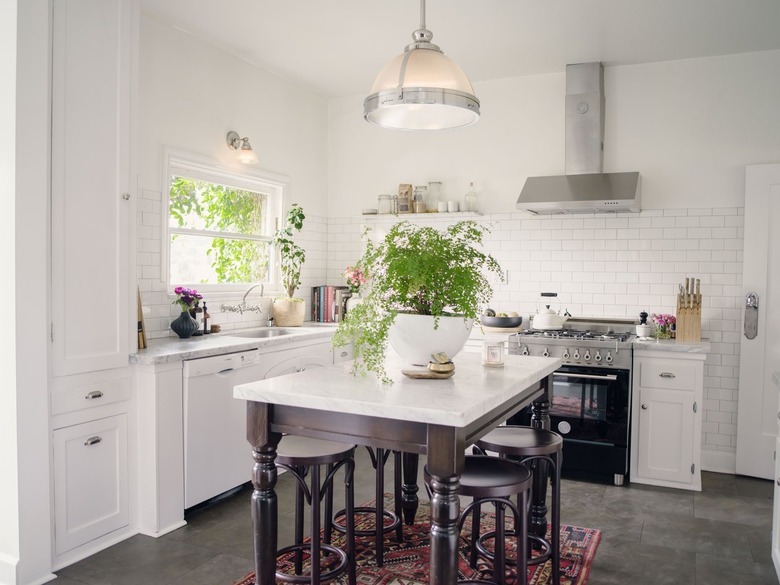How To Know How Much Light You Have For Your Houseplants
When it comes to considering the proper amount of light for our houseplants, is bright light the same as direct light? Does a window facing east offer low light or indirect light? Is there such a thing as bright, indirect light? And what the heck is medium light?
While people toss these light labels around loosely in conversation (as well as on gardening blogs), each term has a meaning that is useful to know. Anyone with houseplants can help them thrive and solve some growth problems by making sure the light they are getting is what is recommended by experts.
Importance of Light to Plants
Importance of Light to Plants
Every houseplant has a shortlist of six different elements it needs to thrive and, sometimes, even survive. These are: water, light humidity, healthy soil, warm temperatures, and nutrients. But you can't just dose them all equally with these things. Plants have different requirements and like different balances of these elements. These are often dictated by the conditions in its native realm.
But despite the differences, every plant needs light. Plants need energy to grow, just like animals. They create their own in a process called photosynthesis that creates sugar from a mix of light, water, and carbon dioxide. That doesn't mean more light is always better or will give the plant more energy. Both too little and too much light can kill a plant.
Below, we are measuring light by referencing foot candles. The term "foot candle" dates back to when candles were the main light source. It is a measure of light intensity. If you placed a candle 12 inches away from a wall and drew a one-foot square on the wall, the amount of light filling the square equals one foot candle.
Bright Direct Light: 2000 - 5000 foot candles
Bright Direct Light: 2000 – 5000 foot candles
Bright light outside usually means you want to put on sunglasses to go out, but what does it mean to plants? It means more or less the same thing. The light is neither soft nor subtle nor romantic, but bright enough that you may squint when you are facing it yourself. Generally, a plant needing bright light wants six to eight hours a day of it. But all bright light is not the same. Some bright light is direct, which provides the higher part of the foot candle range (2000-5000 foot candles). Other is indirect, which provides the lower part of the range (1000-2000 foot candles).
Bright direct light means not just that the light is bright, but that the sun's rays that are causing that light fall directly on the plant's leaves. Fruiting plants often require a minimum of six hours a day of bright, direct light. This is best accomplished by placing the plant in either a south facing window that essentially gets all-day sun, or a west-facing window that gets afternoon sun.
Bright Indirect Light:1000-2000 foot candles
Bright Indirect Light:1000-2000 foot candles
Bright indirect sun never touches a plant's foliage directly. The plant accesses the light after it has bounced off another surface. This may be because they are moved back from a south or west-facing window. But a light curtain on the window can also turn bright direct light into bright indirect light. Some palms and ferns prefer indirect light and will die in direct light. Their leaves will crisp and wilt.
Medium Light: 250-1000 foot candles
Medium Light: 250-1000 foot candles
Moving down the spectrum, the next category is medium light. This can be particularly frustrating to owners of houseplants since "medium" is such a general term. In the context of houseplants, it means significantly less light gets to the plant than bright indirect light. Medium light is always indirect, so the rays never touch the plant. Plants that thrive in medium light are usually happy with four to six hours of indirect light a day.
To achieve medium light for a houseplant, you can place it in a room with bright, indirect light, but site it a distance from the window. Alternatively, if you have a room with an east-facing window, it should offer medium light. The sun coming in the windows will be soft, morning light which may hit the balance point for houseplants needing medium light.
Low Light: 50-250 foot candles
Low Light: 50-250 foot candles
Most gardeners love low-light houseplants, since most of us have at least one room in the house that gets little sun. Perhaps the windows are small, or the light may be blocked by a neighboring building, but these are the darkest rooms in the house. It's also possible that the room has a northern exposure, which means no direct light and low levels of indirect light. These situations usually provide two to four hours a day of indirect light.
You may be surprised by how many plants do well in low-light situations. All tropical plants that lived in the understory of a rainforest, for example, as well as those popular, big-leaf plants. Surprisingly, many of the plants NASA identified as tops at cleaning toxins from the air also thrive in low light situations, like the snake plant and the heartleaf philodendron.
Summary of Window Sun Exposure
Summary of Window Sun Exposure
Here's a handy recap of what type of light is found in which rooms. It provides a good general guide, but you'll want to consider the other factors mentioned above as well.
|
North-facing window |
low light exposure |
|
East-facing window |
medium light exposure |
|
South-facing window |
direct bright light exposure |
|
West-facing window |
indirect bright light exposure |
